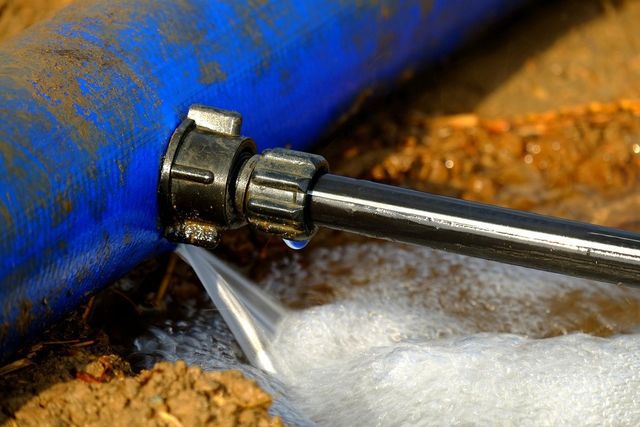This great article listed below involving Leaking water lines is incredibly interesting. Try it and make your own results.

Early discovery of dripping water lines can alleviate a prospective catastrophe. Some tiny water leakages might not be visible.
1. Examine the Water Meter
Inspecting it is a surefire method that helps you discover leakages. If it relocates, that suggests a fast-moving leak. This suggests you might have a sluggish leak that could also be below ground.
2. Check Water Intake
Examine your water expenses and also track your water intake. As the one paying it, you should observe if there are any kind of inconsistencies. If you spot sudden changes, despite your intake being the same, it implies that you have leakages in your plumbing system. Bear in mind, your water bill should drop under the exact same range monthly. An abrupt spike in your expense shows a fast-moving leak.
At the same time, a constant boost each month, despite having the same practices, reveals you have a slow-moving leakage that's likewise slowly intensifying. Call a plumber to extensively examine your home, particularly if you feel a warm location on your floor with piping underneath.
3. Do a Food Coloring Test
When it comes to water usage, 30% comes from commodes. Examination to see if they are running appropriately. Decrease flecks of food shade in the storage tank and wait 10 mins. There's a leak in between the container as well as dish if the color in some way infiltrates your dish during that time without flushing.
4. Asses Outside Lines
Don't neglect to check your outdoor water lines as well. Examination faucets by affixing a garden hose. Ought to water leak out of the link, you have a loosened rubber gasket. Change this and also ensure all connections are tight. It will help get it expertly examined and kept every year if you've got a lawn sprinkler system. One little leakage can lose tons of water and increase your water expense.
5. Evaluate and Evaluate the Scenario
House owners ought to make it a habit to inspect under the sink counters and also inside cabinets for any type of bad odor or mold and mildew growth. These 2 red flags suggest a leak so timely focus is called for. Doing routine assessments, also bi-annually, can save you from a significant trouble.
Much more notably, if you recognize your residence is currently old, maintain a watchful eye on your heating systems, hoses, pipes and so on. Look for stainings and also damaging as most pipes and appliances have a life span. They will also normally weaken due to deterioration. Don't wait for it to rise if you suspect dripping water lines in your plumbing system. Call a professional plumber as soon as possible so you don't end up with a dreadful mess in your home.
Early discovery of leaking water lines can minimize a prospective calamity. Some little water leaks may not be noticeable. Inspecting it is a guaranteed means that helps you discover leakages. One tiny leak can squander loads of water as well as increase your water bill.
If you believe dripping water lines in your plumbing system, do not wait for it to rise.
How to Know If Your Home Has a Hidden Leak
Water Meter Reveals Inexplicable Water Usage
If you’d like to test whether or not there’s a leak somewhere in your home, you can do this using your water meter. Here is how to conduct the test:
Don’t use any water in your home for at least 30 minutes; this also means not turning on faucets or water-using appliances.
Go outside, and check your water meter for activity.
If your water meter shows that there was activity, even though no one was using any water, this proves that there is a leak in your home.Visible Mold or Mildew Growth
Leaks behind walls create moist, dark environments that allow mold and mildew to grow and thrive. Eventually, you might see mold growth forming on the wall closest to a hidden leak.
If mold is growing in an area that receives a high amount of moisture, such as a bathroom, it may simply be an indication that better ventilation is needed. However, if you see mold growth on a wall or the ceiling in an area where you would not expect, you probably have a hidden leak.
Musty, Mildew Odor
Sometimes you might not be able to see the mold or mildew that is growing as a result of a leak. However, the smell can give the problem away just as easily. If you catch a whiff of something musty, there’s a good chance that old water is collecting somewhere in your home that you can’t see.
Stained/Warped Walls, Ceilings, or Floors
When your home soaks up water, a variety of red flags can become visible, including ceiling stains, bubbling drywall, warped walls, and sagging floors. While these issues can be caused by excess humidity, they can also be signs that a pipe or plumbing connection has started leaking behind your walls.
Inexplicably High Water Bill
After a while, you get a general sense for what your water bill should be. If you own a pool or sprinkler system, your bill will tend to be higher during summer. However, if you receive a water bill that seems especially high, and you can’t figure out what caused it, then you may have a hidden leak somewhere that’s increasing your bill.
https://www.plumbingjoint.com/blog/2019/july/how-to-know-if-your-home-has-a-hidden-leak/

We had been shown that editorial about Detecting hidden plumbing leaks from a friend on another blog. Sharing is good. Helping people is fun. I enjoy reading our article about Detecting hidden plumbing leaks.